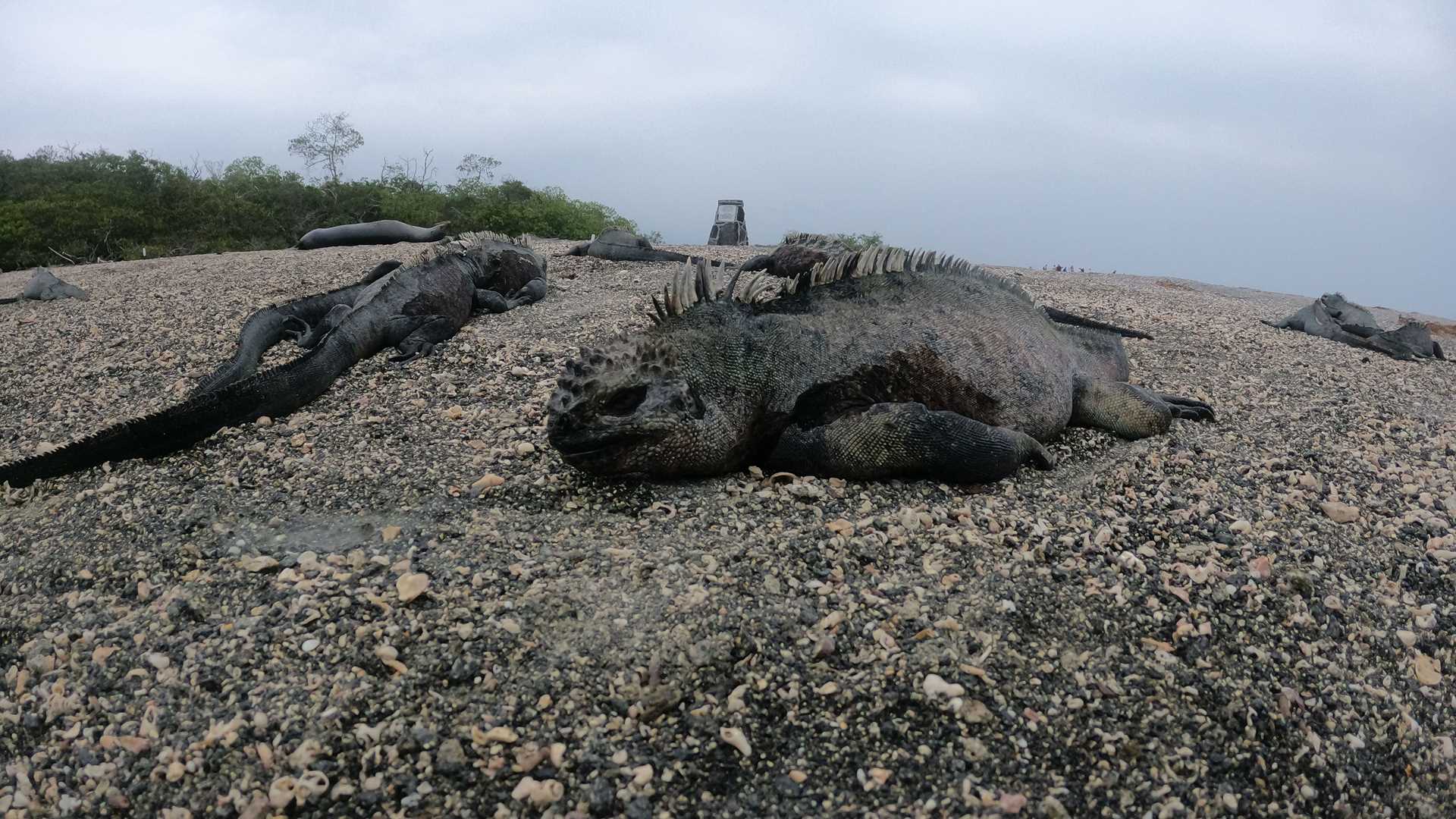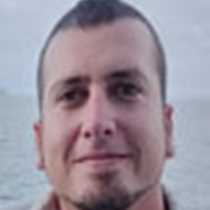We woke up early in the morning as National Geographic Islander navigated along the northern part of Isabela Island. Slowly the sun appeared above the clouds surrounding Volcano Wolf. We spotted our first birds as Galapagos fur seals returned to shore from their night hunt. We enjoyed a great breakfast. Afterward, expedition leader Vanessa called everyone to the bow to celebrate as we crossed the equator. Our guests happily crossed the line. Approaching Punta Vicente Roca, the visitor site, we spotted Galapagos sea lions and a good number of ocean sunfish.
The first activity of the day took place as we dropped anchor at Punta Vicente Roca. This is a spectacular geological site. The combination of the former volcano’s tall cliffs and the tuff cones formed later adds an amazing contrast to this unique visitor site. Our best tools for exploration, our Zodiacs, were lowered down, and off we went to explore the coast. We observed Nazca boobies and blue-footed boobies resting on the small ledges of the tuff cones. Galapagos sea lions swam close to our Zodiac, and Galapagos penguins rested on a broken piece of the tuff cone after feeding. What a wonderful sight! In a calm area, we found a good number of Pacific green sea turtles.
The morning’s activities ended with snorkeling. Pacific green sea turtles, plenty of colorful fish, Galapagos marine iguanas and flightless cormorants surrounded us. It was a phenomenal experience!
The ship was repositioned toward Fernandina Island. The youngest island of the archipelago, Fernandina is a highlight of our expedition. This island shows our guests the beginning of life. We observed animals thriving in the hostile environment. Pioneer plants like lava cacti grow on the lava fields, breaking down rocks little by little to create soil for the next generation of plants. Punta Espinoza is known for its huge colony of Galapagos marine iguanas. It is hard to distinguish the iguanas from rocks since they are so dark in color. On the other hand, colorful Sally Lightfoot crabs added contrast to the young, dark lava fields. We ended our walk as the sun was setting, returning to the ship with great memories. It was a fantastic day in the western part of the archipelago.







